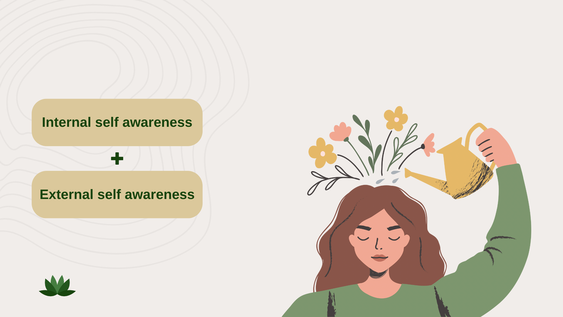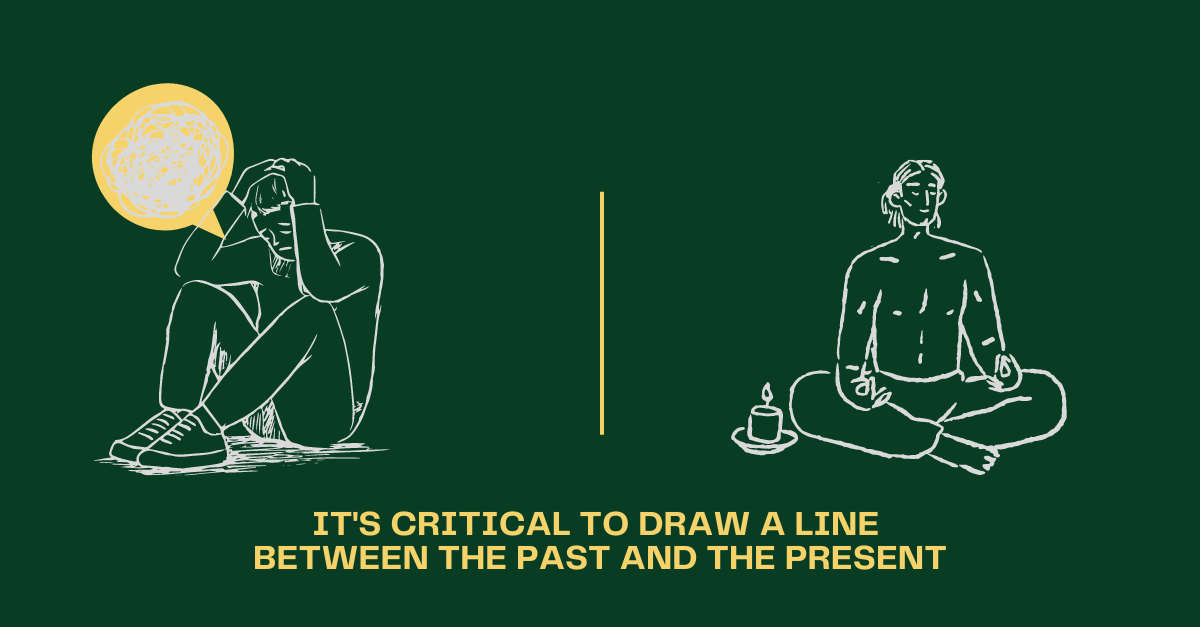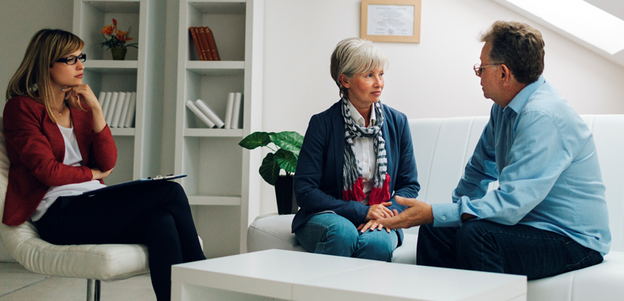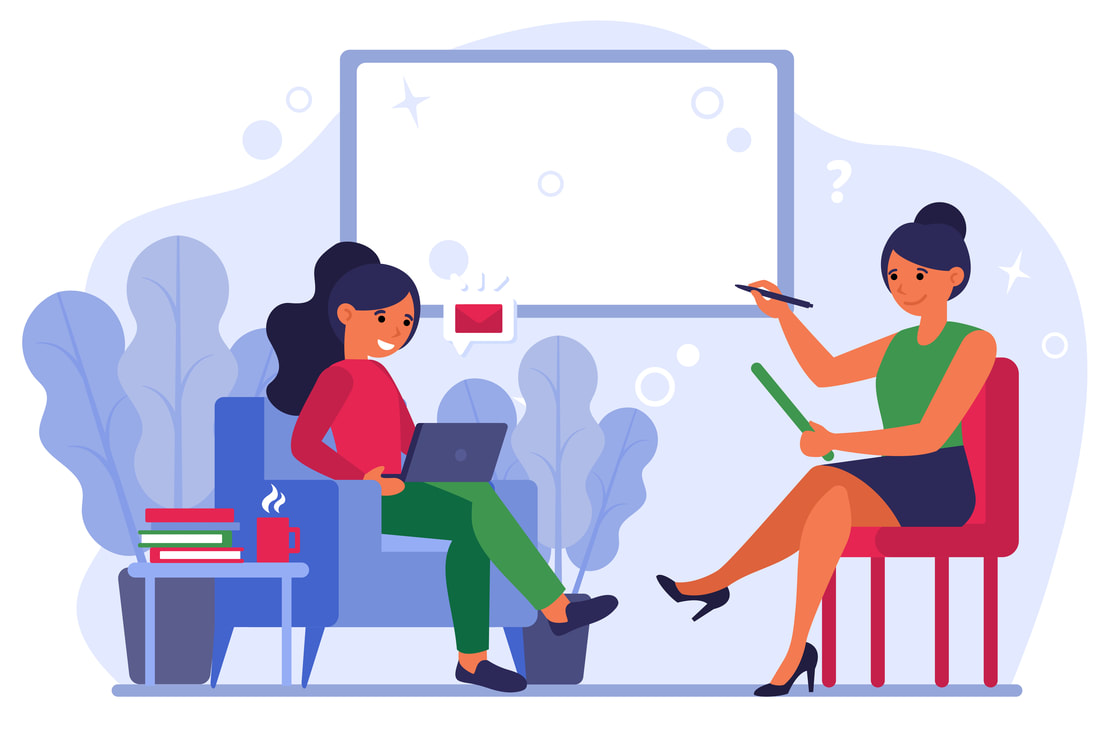So how can we address self-doubt and challenge negative beliefs and cultivate self-confidence?4/26/2024 Self-doubt is essentially a lack of confidence or belief in oneself and one's abilities. It often manifests as questioning one's decisions, skills, or self worth, and can lead to hesitation, anxiety, and reluctance to take action. Self-doubt can stem from various sources and develop in different ways for different people. Here are some common factors that contribute to the development of self-doubt: Past experiences: Negative experiences or failures in the past can lead to self-doubt. For example, if someone has faced criticism or rejection repeatedly, they may start to doubt their abilities or worth. Comparison with others: Comparing oneself to others, especially in areas where they feel inadequate, can fuel self-doubt. Seeing others succeed or excel can make individuals question their own capabilities. High standards: Setting unrealistic or excessively high standards for oneself can contribute to self-doubt, as individuals may constantly feel like they're falling short of their own expectations. Lack of positive reinforcement: A lack of encouragement or positive feedback from others can contribute to self-doubt. Without affirmation or validation, individuals may struggle to believe in their own abilities. Perfectionism: Perfectionism involves striving for flawlessness and setting unrealistically high standards. Constantly striving for perfection can lead to feelings of inadequacy and self-doubt, as it's impossible to meet such high standards consistently. Negative self-talk: Internalizing negative thoughts and engaging in self-criticism can undermine self-confidence and contribute to self-doubt. Continuously berating oneself reinforces feelings of inadequacy and self-belief. Trauma or abuse: Experiencing trauma or abuse can significantly impact self-esteem and confidence, leading to self-doubt as individuals struggle to trust themselves or their perceptions of reality. Fear of failure: The fear of failing or making mistakes can paralyze individuals, leading them to doubt their abilities and avoid taking risks or pursuing their goals. Unsupportive environment: Being surrounded by people who are unsupportive or critical can foster self-doubt. Negative influences from friends, family, or colleagues can undermine confidence and self-belief. Overall, self-doubt is a complex phenomenon influenced by a combination of internal and external factors. So how can we address self-doubt and challenge negative beliefs and cultivate self-confidence?
So how can we address self-doubt and challenge negative beliefs and cultivate self confidence?Working on self-doubt involves developing self-awareness, practicing self-compassion, and building self-confidence. Here are some strategies to address self-doubt:
0 Comments
Clients come to therapy with various unresolved emotions, experiences and secret thoughts. The expectation of them sharing all this with a stranger; the therapist might cause anxiety and overwhelm. Based on research and clinical observation, it has been concluded that initial sessions can be way more uncomfortable than future ones. It gets better once this alliance is established and cultivated. In this blog I discuss how to work on this alliance, cultivate it and assess its health. As therapists manage to work on building this alliance with their clients, they still intend to support them in their pursuit of goals, hold them accountable and provide them with the solid confident anchoring they are looking for. Successful therapy depends on a client’s readiness, honesty sharing their experiences and behavior and trust in their therapist. Yet many clients have spent a lifetime avoiding or concealing thoughts, feelings, and behaviour due to suppressed shame, lack of awareness, and perceived incompetence. They might have never had a secure attachment with another human being who they can trust and rely on. It is essential to highlight the importance of giving the client the time and space they need. It takes time for a therapist to earn a client’s trust, and build a level of connection, collaboration and attunement. Therapists should not expect that all clients will immediately open up and resonate with them. I find it helpful to be present and mindful with no judgment or perceived plan. A new client requires to build a positive working alliance with their therapist; however, it is also important to acknowledge that we need to attune to their unspoken goals, fears and anxieties.
As therapists, we have our clients’ best interest as our main focus. The ethical obligation that our profession is founded on is to be present with no judgment, personal agenda or hidden expectations. The pursuit of change in the client might in some cases be faced by a level of unconscious resistance. That said, this resistance might happen for a variety of reasons unrelated to the therapist; fear, shame, worry, and/or inaccessible resources. With this in mind, we need to acknowledge that therapy is not only the relationship or even the technique. It is way more. It entails the trust and resonance between the client and the therapist that depicts both walking on this path of wellness. Finally, we need to remind ourselves that therapists are human beings with their own emotional baggage, just like their clients. It's easy to feel overwhelmed, rejected or judged by a client who does not talk or participate. It is our responsibility to take care of ourselves between and during sessions, talk to another therapist or a supervisor, seek more training and/or therapy. This can help us identify these thoughts and emotions and work on resolving them in order to protect our clients from unconscious biases. Our responsibility and ethical obligations entail that we seek ongoing training, self care and refer clients when we identify that we are not a good fit. Self awareness is defined as the skill of understanding our own behaviours, perceptions, emotions, and yearnings. Cultivating this critical skill enhances our self compassion, trustworthiness, and overall effectiveness. It also improves our relationships, empathy, and commitment. Surprisingly, research confers that self awareness is a rare quality among the general population. Based on research, only 10%–15% of the people studied fit the criteria. The good news is that we can cultivate such skills by following simple techniques shared below. But first let’s delve deeper into some interesting findings about self awareness in order to better understand it. There are two types of self awareness: internal and external. Internal self awareness:Internal self awareness is based on positive introspection of self. “Positive” refers to compassionate, inquisitive introspection divorced from judgement and debilitating criticism. Try to follow an internal locus of control to cultivate higher level of self awareness through understanding your own emotions and perceptions. That said, this requires a level of objectivity that might be hindered by unconscious thoughts, unresolved emotions, and motives. For this purpose, it is always helpful to seek the support of a trusted other or trained professional to bypass these blockages of the unconscious mind to avoid unnecessary analysis might lead to rumination, negative thoughts, and low self esteem. External self awareness:The other type of self awareness is external. It means taking an external locus of control to understand how other people perceive us, in terms of behavioural patterns, emotions, dreams and aspirations. People who know how others see them are more skilled at practicing empathy and taking others’ perspectives. They tend to have better relationships and more satisfaction with their life. Similarly, they tend to be more truthful, objective, and honest. You may also benefit from consulting a friend and seeking feedback from a trusted other such as a friend or a professional to provide you with honest perspectives. Combining the two halves:Ideally, we need to cultivate a balanced combination of both types; to be able to identify our own values, aspirations and behaviour (internal self awareness). Equally important is to practice a level of humility and compassion to request feedback on how others view us (external self awareness). This balance would eventually enhance self esteem, and decrease anxiety and depression. The problem is that the human mind rarely operates in a wise manner that ideally combines rational and emotional perspective. Hence, our judgments are seldom free from bias. We tend to confirm our biases without questioning their validity or value. We fall prey to our own contradictory evidence, and we force our thoughts to conform to our initial explanations. Why do we require external feedback? Because lack of balanced feedback leads to toxic overconfidence, overestimating our skills and abilities, and eventually disappointment and resentment with self and others. In summary, if you are thinking of improving your self awareness and overall happiness, you need to seek a balanced perspective of internal and external self awareness. Questions to help you build your self awareness:Take a minute to ask yourself the questions below. Work on answering them in writing. Ask a trusted loving other who has your best interest to answer the same questions about you separately and objectively (also in writing). Once they are done, request that they share their feedback with you candidly.
As you work on these questions, remind yourself to practice open mindedness, compassion to self and empathy to others. This exercise is meant to enhance your self awareness. Jade Counselling & Wellness Named One of Vancouver's Top 5 Counselling and Psychotherapy Practices3/5/2024 Vancouver, BC - March 5, 2024 - Jade Counselling & Wellness is proud to announce that it has been recognized as one of the top 5 counselling and psychotherapy practices in Vancouver by The Best Vancouver. This recognition underscores Jade Counselling & Wellness's commitment to providing exceptional mental health services to the community.
The award-winning practice offers a range of counselling and psychotherapy services to individuals, couples, and families. With a team of highly skilled and compassionate therapists, Jade Counselling & Wellness is dedicated to helping clients navigate life's challenges and achieve personal growth and well-being. "We are thrilled to be named one of the top 5 counselling and psychotherapy practices in Vancouver," said Ola Abugharbiyeh, MA, MACP, RCC, Founder and Clinical Director of Jade Counselling & Wellness. "This recognition is a testament to the hard work and dedication of our team, who are committed to providing the highest quality mental health care to our clients." About Jade Counselling & Wellness: Jade Counselling & Wellness is a leading counselling and psychotherapy practice in Vancouver, BC. With a team of experienced therapists, Jade Counselling & Wellness offers a range of mental health services to individuals, couples, and families. The practice is committed to providing compassionate and effective care to help clients achieve personal growth and well-being. Visit www.jadecounselling.ca for more information. In my practice as a trauma and relationships therapist, I am often asked about the connection between healing and forgiveness. I believe that the origin of such confusion comes from convoluted understanding of the relationship between an entity that inflicts harm over a recipient of it. To claim that healing would never happen unless forgiveness precedes sounds like a free pass oppression. It also indirectly burdens the survivor with the duty of forgiving in order to feel better. Then how do we perceive forgiveness. In psychology forgiveness is usually defined as an intentional decision to release emotions of resentment toward someone who had caused us harm, regardless of whether they deserve it or not. I definitely agree with the above definition. However, I do not perceive forgiveness as a conditional prerequisite towards healing from trauma. It is actually the other way round! In order to heal from trauma, injustice or any form of oppression, you need to identify, acknowledge and process the act. The pain and hurt are entities that cannot be dismissed or brushed under the carpet. They should never be denied or suppressed. Similarly, the impact of an offense against you is not something to undermine or find excuses or justifications for. On the contrary, acknowledging such unfairness inflicted on you, restores your sense of internal strength, and provides you with a foundation to reclaim your power.
The trick here is to draw a line between the past and the present. Harm did happen indeed (in the past). The hurt and the pain are still happening in the present. When things happened to a past version of you in the past, it was not the same present self. We develop and transform with every interaction. We gather information, experience emotions and act in certain ways based on the present moment, then up spiral with that to a higher level of awareness and consciousness. The present self starts to reclaim a sense of change that begins with an intention to be in charge, acknowledges the past then moves ahead based on a value system that acknowledges self worth, justice, freedom and choice. Now is the time to draw a line between your past and present. Make a conscious decision of moving forward towards healing because you deserve it. Conscious forgiveness begins with forgiving ourselves for unintentionally being on the recipient end of harm. By the same token, it is a step forward from rumination and despair towards validation and hope. Though forgiveness can help repair ruptured relationship, it doesn’t obligate you to reconcile with someone who harmed you. Moreover, it never means to release them from being held accountable. Once you process the pain, you are responsible towards yourself to make a decision of letting go of pain and allowing room for the light of inner peace to flourish within to transform and progress with confidence and pride - only then can you really forgive! It is one of the greatest therapy goals to identify and acknowledge our deep seated emotions such as anger, fear and sadness connect with them and heal them for good. This is what we call the process of healing the wounded inner parts of ourselves. Whether such wounds were caused by an incomprehensible childhood loss such as a family member’s death, physical or psychological abuse, or a broken relationship; the pain that results from such experiences lives with us for the rest of our lives until we decide to let go of it, heal it and integrate such experiences in the here and now. We do so through reconnecting with some of the reasons for our fears, unexplained repetitive patterns, and addictions. The magic of healing leads to channeling and transforming the wounded self and eventually integrating them with other parts. In this process, we learn to reparent such parts and move forward with independence and resiliency. Many of my clients inquire about and express interest in ending unhealthy coping habits such as binge eating, shopping, or repetitive insure attachments. I often explain this work of healing the inner child pointing out to the sad fact of learned helplessness, as well as internalized suppression of emotions, and negative self beliefs. When negative experiences and losses such as divorce, death, relocation …etc. are not discussed with children openly, children are left to create their own narrative about such experiences. They internalize emotions of shame, guilt and resentment. As we grow, we are reminded of such suppressed memories once we encounter experiences that resonate on a subconscious level. This activates the same neural pathways in our nervous system. We over-react, experience a panic attack or just withdraw and lose interest. We might also present with unexplained confusion or overwhelm. How can we heal this inner child and help heal negative emotions we might be holding on to. Such baggage we carry from our childhoods can be very difficult to release, especially when we’ve been exposed to deep trauma. We just need to begin with acknowledging the inner child and treat them with respect, compassion, and acceptance. In that sense we derive a lot of wisdom from Buddhist practices of mindful awareness of emotions to restore ruptured relationships through meditations and exercises that aim to acknowledge and transform the hurt that many of us may have experienced as children. Various modalities we practice rely on such philosophical foundation; ACT, AEDP, and even EMDR. I have been asked this question recently by new clients. I thought that writing this blog about it would prepare potential clients and provide some orientation. Emotionally focused therapy EFT is an intervention based on empirical research of adult bonding. This modality is utilized in individual, couples and family therapy with the purpose to identify and address distress in relationships. EFT is a beneficial approach that helps to understand one’s emotional responses and those of significant people in our lives. In therapy, our goal is to enhance the perceived security and connection in relationships through focusing on emotions and emotional responses and those of partners and family members. This can help to address attachment-related insecurities and how to interact in more loving, responsive, and emotionally connected ways, that lead to more secure attachment. EFT is based on attachment theory which highlights the importance of
emotional contact and safe connections to develop healthy relationships. Lack of which can go back to abandonment, neglect, and trauma during childhood. Such unresolved issues and unmet need might lead to repetitive negative patterns of conflict caused by insecure attachment and lack of trust. EFT is a non-directive approach to treatment in which clients gain better understanding through nonjudgmental expression and attentive presence and validation. EFT involves nine treatment steps that begin with the identification and assessment of interaction styles and de-escalation. In the middle phases of treatment, the therapist collaborates with the clients to find ways to form stronger bonds in the relationship. The therapist reframes key issues in terms of negative patterns of interaction, underlying emotions and fears, and each client’s attachment needs. Changes are consolidated in the final stages which eventually helps clients become better able to identify the attachment issues underlying conflict to express related emotions. The therapy is considered complete when clients can reliably engage in changed interaction patterns learned in therapy outside of the therapy environment. Couples counselling is usually provided by a trained therapist who helps individuals involved in a romantic relationship gain clarity into their relationship, resolve conflict and improve satisfaction utilizing a variety of therapeutic interventions. Many couples who are committed to their relationships want to explore the process of reconciliation and intrinsic connection. Others ignore and adapt to emotional stagnation and damaging behaviour for too long before eventually seeking support. This blog is an invitation to normalize reaching out instead of sweeping the issue under the carpet. Emotions can be complex, painful and sometimes scary. Nonetheless, the only way to live authentically is to open ourselves to our emotions as much as we do to our thoughts, sensations and behaviour. First, let us agree to destigmatize the process of opening up instead of suppressing emotions. Suppression never resolves challenges or rekindles lost connection. Facing such issues courageously with sincere intentions to change is the only way to work on building trustworthy connections. Romantic relationships occur between whole selves; mentally, physically, emotionally, and spiritually. We contribute with our past and present experiences, dreams, and aspirations. Yet whenever something goes wrong we think it is only communication or resort to victimhood and blaming. The problem is that communication does not happen in void. Healthy communication requires solid foundation of safety and trust. This requires negotiating internal and external factors that contribute to the relationship to identify unhealthy coping such as sulking, anger, bitterness, sarcasm or resentment as well as damaging behaviour that sustain vicious cycles.
Once we point out the trigger, the feeling, the meaning and the action we bring to light such emotions to collaborate to navigate emotional experiences and listen and empathize to one another. This helps to resolve relationship issues that might be related to life transitions such as the birth of a child, sudden or chronic illness, unemployment, or mental health issues. Such issues between couples can be noticed between new couples during the initial adjustment period or between couples who have been together for many years. Fighting indicates that the relationship can still be worked on through facilitation and growth in order to resolve the actual underlying issues such as childhood trauma or attachment based unresolved issues. This can be transformative and healing. Many couples find it humbling as they get close to one another. Some popular orientations in couple’s counselling are emotionally focused therapy EFT, Gottman Method, Narrative therapy. If your relationship has reached the point where you think you need counselling, it might not be a great idea to try to do it alone. Choosing the right couples counseling therapist can make it easier to succeed. All the best! As a potential or existing client you might wonder on how this voluntary involvement works and what it entails. In a nutshell, therapy is a collaborative agreement between a client and a therapist. This partnership is guided by ethical principles and professional best practices that aim to protect clients and provide them with the required information of their rights and responsibilities; and what to expect and how therapy works. I will try to summarize the process here and provide rationale why we as therapists need to spend some time with clients on informed consent throughout our work together. As mentioned above, informed consent stems from the acknowledgement of the client’s rights, and freedom to determination to initiate, pursue, or discontinue therapy at all times. Informed consent is an ongoing process that begins with the very first interaction between the therapist and the client; even before the first session. It actually begins at the time of the initial consultation which many therapists provide free of charge. Client can obtain insight about the therapist’s professional background, credentials and theoretical orientation as well as their approach to counselling. Additionally, counsellors may direct you to their websites or publications to learn more about their work in order to better determine if you want to contract them. This transparent interaction is beneficial for the client and the therapist as both of them have stake in a good fit to work effectively and comfortably. As therapists we always encourage clients to play a proactive role in choosing their therapist based on various criteria; their needs, preference and style; just to name a few. Other important factors are cultural competency, as well as specific training. Obviously, this role that a client plays right in the beginning in finding the right counsellor is the spark to empowerment and resolution.. Once clients and therapists determine that they want to collaborate they identify the presenting issues that made the client seek counselling. This step only provides a general platform for the work as therapy is a process where we would continuously revisit our goals and plans requesting feedback and assessment. Often times clients identify other issues later in the process. Whether this happens due to enhanced awareness or enhanced therapeutic alliance is equally commended as both will become more equipped to resolve the relevant issues.
To reiterate, consent is an ongoing process of reassessing the client’s needs and obtaining their commitment to the work. This alignment acts as a catalyst to the efficacy of the mutual work especially if the identified goals were SMART; S-specific, M-measurable, A-achievable, R-realistic, and T-time bound. Another level of consent includes the approach of therapy as well as alternative approaches. The therapist’s role is to illuminate their clients with options. This further maintains the initiated trust required for effective work. That is why, it is essential to collaborate with you as the client and engage you in the process. This is based on the conviction of your autonomy, agency, and independence. Needless to say that due to the intricacies of therapy work, it is almost impossible to predict the process with exact precision. It is a reiterative process that requires ongoing assessment and evaluation and continuous informed consent to obtain direction of this shared venture towards hope and healing The new PIXAR movie Soul underscores the importance of living life in alignment with our aspirations and talents. Through telling the story of Joe, we are inspired to think of our own unique passions with sincere conviction. On another note, the movie highlights mindful presence in the here and now; living every single moment to its fullest while enjoying the simple pleasures in life; a leaf falling off a tree or a pepperoni pizza. It is an invitation to curiously find out the “spark” that connects us to life. Joe, a middle-school band teacher whose life has not gone the way he expected is passionate about jazz. Although he is so good at it, his mother dissuades him from playing with a band. Instead, she encourages him to accept a teaching job to guarantee financial security. Joe’s heartwarming conviction drives him in a different direction. When Joe hangs between the two realms of life and death after an accident he meets another Soul that has yet to find her passion. Soul helps her to find her path back to life. As audience, we are inspired to awaken the dormant genies that make our heart sing. A Child-Friendly Discussion of Soul
The movie depicts the afterlife abstractions which makes me recommend parental guidance especially if you have young children. Our perspectives as adults around life and death varies a lot especially that children may see things in black and white. Just make sure to be around to answer your children’s questions. Validate any potential anxiety and help them make sense of the abstract concepts. Whilst you want them to notice the positive message of pursuing one’s talents and dreams, it is also important to ground them in the practical application of such pursuit such as practice, and training. Reassure a sense of control by encouraging them to practice what they love and enjoy. Ask them about the things that they value and love. Encourage them to follow their passions with persistence by allocating daily tasks and schedules and connecting them to relevant community resources. Finally, make them realize that you have faith in them and their dreams and assure them of your support. Hopefully, this movie will encourage you and your family to open your hearts and minds to creativity and passion. |
About OlaOla is a Registered Clinical Counsellor offering a holistic approach to healthy relationships, life transformation and fulfillment. |
|


















